Asphalt Preventative Maintenance: Essential Strategies for Longevity
Asphalt paving materials are essential for creating durable roadways, parking lots, and other pavements that withstand the daily wear and tear of vehicular traffic. Like any substantial investment, asphalt pavement requires a proactive approach to maintenance in order to extend its service life and optimize its performance. Preventative maintenance encompasses a range of practices designed to keep asphalt surfaces in good condition and to prevent the development of major defects.

A comprehensive asphalt preventive maintenance program includes regularly scheduled inspections, timely repairs, and the application of surface treatments. These activities are critical in guarding against the deterioration that can occur due to exposure to weather, chemicals, and load stresses. By identifying and addressing issues early, property owners and municipalities can prevent minor problems from escalating into costly repairs or even complete pavement failures.
Key Takeaways
- Regular inspections and repairs are crucial for maintaining asphalt integrity.
- Preventative maintenance extends the service life of asphalt pavements.
- Timely interventions can prevent costly repairs and potential hazards.
Understanding Asphalt and Its Importance
Asphalt is a ubiquitous material known for its durability and versatility in paving. This section outlines the composition of asphalt and underscores the benefits asphalt pavements provide.
Asphalt Composition and Properties
Asphalt, a key material in asphalt paving, is composed of aggregates—such as crushed rock, sand, and gravel—bound together by asphalt binder. This binder, also known as bitumen, is a sticky, black, and highly viscous liquid or semi-solid form of petroleum. The unique combination gives asphalt surfaces their distinct properties: robustness, weather resistance, and the ability to withstand heavy loads. These inherent features contribute to the durability of asphalt pavement, making it a preferred choice for roadways, parking lots, and airports.
Benefits of Asphalt Pavement
Asphalt pavement is lauded for its numerous advantages. Firstly, its smooth surface reduces wear and tear on vehicles, offering a cost-efficient solution in the long term. It also enhances safety by providing better skid resistance and reducing splashback during wet conditions. Additionally, this type of pavement is associated with lower noise levels compared to other surfaces. The sustainability angle should not be overlooked; asphalt is recyclable, which means it supports environmental conservation efforts by allowing materials to be reused and repurposed in future paving projects.
Preventative Maintenance: An Overview
Preventative maintenance (PM) is essential for preserving the integrity of asphalt pavements. By implementing a proactive approach, transportation agencies can effectively extend the service life of roadways.
Defining Preventative Maintenance (PM)
Preventative maintenance refers to the scheduled, planned strategy of condition-based treatments to maintain or improve the functional condition of asphalt pavements. It is centered on proactive measures to prevent deterioration, rather than reactive steps that address damage after it occurs. To be effective, PM must be performed while the pavement is in good condition or in the early stage of decline.
The Role of PM in Pavement Longevity
Preventive maintenance plays a crucial role in extending a pavement’s service life. By addressing minor issues proactively, it prevents small problems from developing into major ones, which can be both expensive and time-consuming to repair. Through techniques such as crack filling, seal coating, and thin overlays, PM helps to maintain pavement smoothness and integrity over time, slowing down the rate of degradation and sustaining overall road performance.
Routine Asphalt Maintenance Procedures
Routine asphalt maintenance is essential in prolonging the lifespan of pavement while ensuring safety and functionality. These procedures are a strategic approach to prevent major repairs, extending the service life of the asphalt.
Sweeping and Debris Removal
Regular sweeping and removal of debris are crucial first steps in asphalt maintenance. They ensure that the surface is clean for inspection and subsequent repair tasks. This process can identify potential issues like cracks or potholes that may be hidden under the dirt and debris.
Crack Filling and Sealing
Crack filling and sealing are preventive measures to keep moisture out of the asphalt structure. Filling should address non-working cracks less than a quarter-inch in width, while sealing is used for larger discrepancies in the pavement. Proper application of these treatments can prevent the spread of damages through the asphalt.
Pothole Patching and Repair
Addressing potholes promptly is essential in asphalt maintenance. Pothole patching encompasses the cleaning out of the affected areas, filling them with new material, and compacting it to create a smooth, even surface. Timely repair prevents further deterioration and potential vehicle damages.
Sealcoating for Protection
Sealcoating provides a protective layer to shield the asphalt from water penetration, oils, and UV damage. It is recommended to apply a sealcoat every two to three years, contingent upon the traffic and weather conditions. This preventative measure not only extends the pavement’s life but also restores its appealing, dark black appearance.
Advanced Preventative Techniques
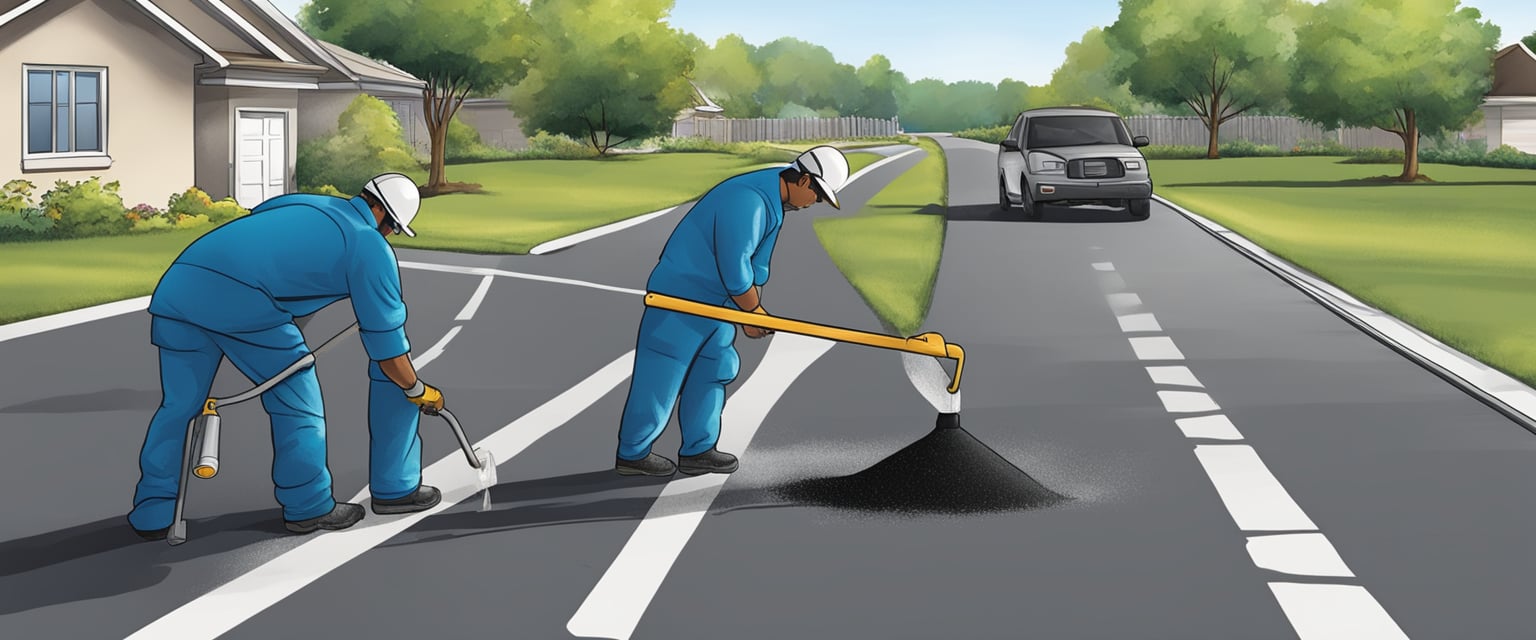
The longevity and resilience of asphalt pavements are greatly enhanced through advanced preventative maintenance methods. These specialized techniques not only address visible wear but also protect against future deterioration.
Microsurfacing and Slurry Seal
Microsurfacing is a polymer-modified cold-mix paving system that incorporates a blend of high-quality aggregates, asphalt emulsion, water, and additives. The mixture is carefully designed to restore friction, improve water drainage, and correct surface irregularities. On the other hand, a slurry seal includes similar materials but is designed for low traffic volumes, providing a cost-effective solution for protecting surfaces from oxidation and weather damage.
Chip Seal and Fog Seal Applications
Chip seal techniques involve the application of asphalt binder to a roadway, followed immediately by an aggregate layer. This method seals existing cracks and provides a new wearing surface. For maintaining and extending the life of chip seal surfaces, fog seal consisting of a diluted asphalt emulsion can be applied. This seals small cracks and voids, providing a renewed surface with extended durability.
Mill & Overlay Methods
The mill and overlay process entails the removal of the top layer of an asphalt surface using a milling machine and the subsequent application of a new asphalt layer. This helps to eradicate surface distresses like raveling or transverse cracking, resulting in a smoother, more durable pavement surface. Additives and recycling agents may be incorporated within the overlay to improve performance and sustainability.
Assessing and Repairing Pavement Failures
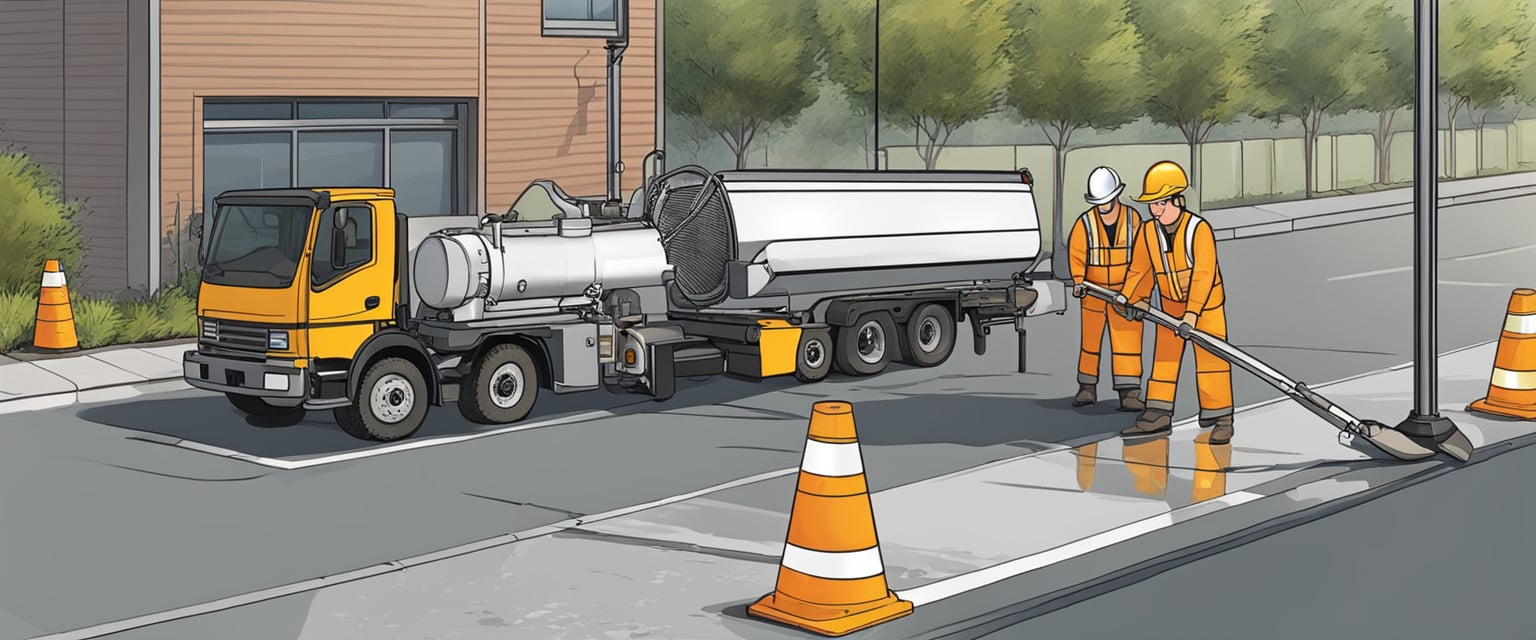
Effective maintenance of asphalt pavements requires accurate identification of pavement distresses and the application of appropriate repair methods. Early detection and timely repair can significantly extend the pavement’s service life and improve safety and ride quality.
Identifying Common Asphalt Distresses
One initially observes the pavement surface to spot cracks, a common form of deterioration. Cracks can manifest as longitudinal, transverse, or alligator cracking, each caused by different stressors such as thermal contraction, traffic loading, or loss of subgrade support. Raveling, the wearing away of aggregate from the asphalt binder, is another distress indicating asphalt aging. Rutting, characterized by surface depressions in the wheel paths, can result from insufficient pavement thickness or weak areas in the asphalt or subgrade layers.
Strategies for Crack and Rutting Repair
Repair strategies require an accurate diagnosis. For cracks that are not extensive, sealing or filling might suffice. Different materials—such as asphalt emulsions, asphalt cement, and fiber-modified asphalt—are selected based on crack type and climate conditions. Rutting repairs typically involve patching the affected areas or milling and overlaying if the ruts are shallow. However, severe rutting might necessitate the removal and replacement of the impacted pavement layers.
Evaluating Need for Reconstruction
The need for reconstruction is evaluated when patches and minor repairs are no longer cost-effective due to widespread distresses or structural failures. Pavement evaluation often involves core sampling and subgrade examination to understand the extent of deterioration. When a pavement’s structural integrity is compromised, full-depth reclamation or a new pavement overlay may be necessary to restore functionality. This process often requires significant investment, but it can provide long-term benefits by addressing both surface issues and underlying structural problems.
Safety and Compliance

Safety and compliance are paramount in asphalt pavement maintenance, focusing on protecting pedestrians, workers, and adhering to established regulatory standards. Effective practices and adherence to regulations ensure a safe environment while maintaining the integrity of the pavement structure.
Ensuring Pedestrian and Worker Safety
For pedestrians, a well-maintained asphalt surface minimizes the risks of trips and falls, a common safety hazard when pavements are in disrepair. For workers, safety is ensured through the use of personal protective equipment (PPE) and strict adherence to occupational safety guidelines during maintenance operations.
- Typical Safety Measures for Pedestrians:
- Clear signage indicating work zones.
- Barriers to separate pedestrian traffic from maintenance work.
- Regular inspections to identify and mitigate potential hazards.
- Safety Protocols for Workers:
- Use of high-visibility clothing.
- Training in the proper handling of heavy equipment.
- Application of safety standards such as those outlined by the American Concrete Institute (ACI).
Regulatory Standards and Best Practices
Compliance with regulatory standards is critical to ensure safety and avoid legal implications. These standards, often enforced at the state or federal level, stipulate the requirements for proper maintenance and safety protocols.
- Frameworks and Guidelines Include:
- ACI codes and regulations for materials and processes.
- Federal Highway Administration (FHWA) directives for traffic control and public safety.
Best Practices are consolidated through industry handbooks and collective expertise, promoting maintenance strategies that extend the pavement’s lifespan while ensuring public safety. For example, The Best Practices Handbook on Asphalt Pavement Maintenance highlights preventative measures executed when roadways show minimal distress, aligning with compliance and safety benchmarks.
Infrastructure and Environmental Considerations

In developing strategies for asphalt preventative maintenance, it’s crucial to account for infrastructure elements like pavement drainage systems and to address weather-related issues. These considerations directly affect pavement integrity and lifespan.
Pavement Drainage Systems
Effective drainage systems are essential for the longevity of asphalt pavement. They prevent the accumulation of standing water, which can cause surface deterioration and compromise the base structure. Properly designed drainage mitigates erosion of pavement materials and subgrade, reducing the need for frequent maintenance.
Dealing with Weather-Related Issues
Asphalt pavement must be engineered to withstand a variety of weather conditions. Rain and weather extremes can exacerbate wear on pavement surfaces. Preventative maintenance must include measures to counteract these effects—such as selecting appropriate materials and treatments—to prevent erosion and maintain structural integrity during extreme weather events.
Aesthetic and Functional Upkeep
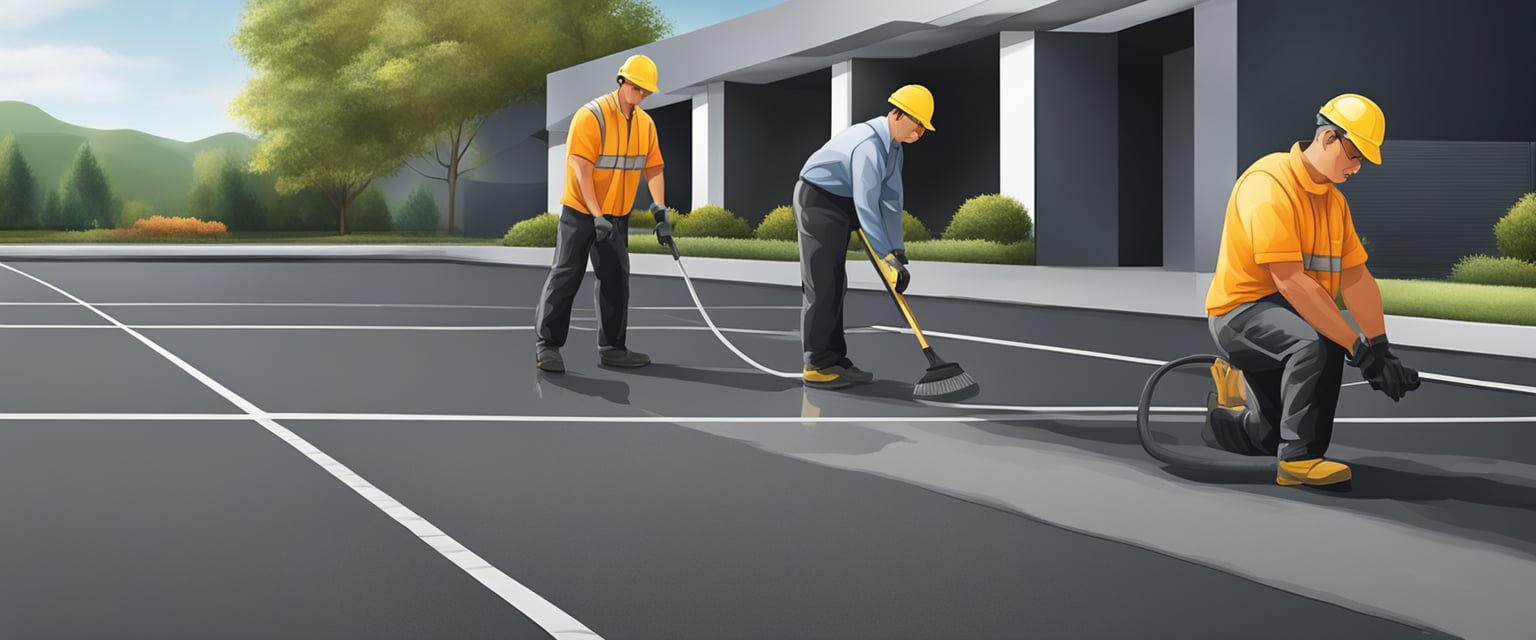
In the realm of asphalt maintenance, aesthetic enhancements such as parking lot striping and markings not only boost the curb appeal but also serve practical functions. Maintaining these aspects ensure that a parking lot is user-friendly and safe.
Parking Lot Striping and Markings
Properly maintained striping is critical in a parking lot for delineating individual parking spaces and ensuring the efficient use of the space. Over time, these markings can fade due to traffic and weather conditions, making re-striping a necessary measure to preserve functionality and compliance with regulations. The layout must accommodate all vehicles while optimizing the number of parking spaces.
- Line Striping: Regularly scheduled re-striping keeps boundaries visible and clear.
- ADA Compliance: Include accessible parking with adequately marked signage.
- Fire Lane and No Parking Zones: Must be visibly marked to ensure that emergency areas are always accessible.
Maintaining Visibility and Aesthetics
The visibility of pavement markings influences both the safety and aesthetics of parking lots. Faded lines and symbols can lead to confusion and mishaps, while clear, crisp markings create an impression of a well-maintained property.
- Color Contrast: Choose high-contrast colors for markings to stand out against the asphalt.
- Reflective Paint: This assists in maintaining visibility during nighttime or inclement weather.
- Clear Symbols and Signage: Use universally recognizable symbols and clear, legible letters for directional signs and ground markings.
Asphalt Maintenance Planning
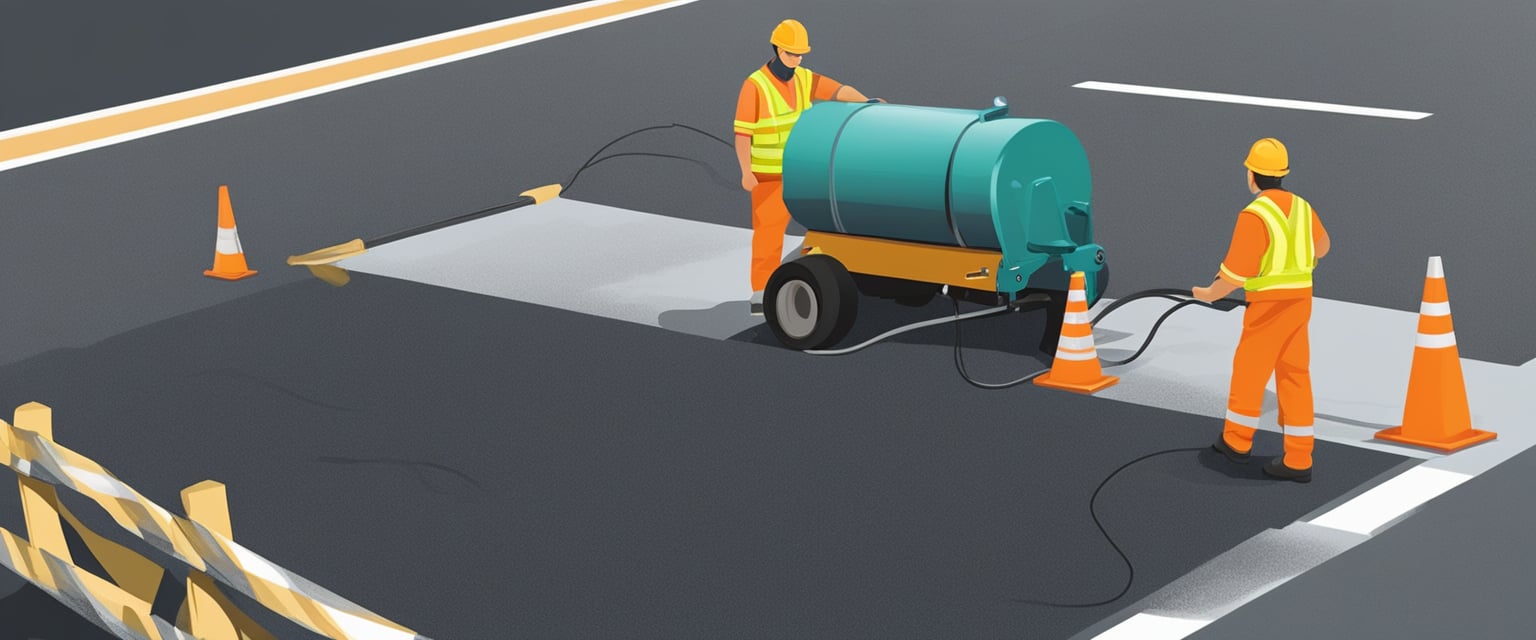
Effective asphalt maintenance planning is pivotal for prolonging pavement life and optimizing maintenance budgets. It involves a strategic approach, encompassing a thorough pavement management plan and diligent scheduling.
Developing a Pavement Management Plan
A Pavement Management Plan is crafted to assess the current condition of the pavement and forecast future maintenance needs. Planning involves identifying goals, such as extending pavement life or improving safety, and determining the resources available, including the maintenance team and budget. For instance, The Ultimate Asphalt Maintenance Plan suggests that preventative measures, when implemented effectively, prevent costlier corrective maintenance.
Maintenance Checklist and Scheduling
Maintenance planning is incomplete without a detailed Checklist and Scheduling. This checklist includes routine inspections to identify issues like cracks or potholes that can be addressed promptly. Scheduling is vital for ensuring routine maintenance is carried out at appropriate intervals. For example, AsphaltPro Magazine recommends regular inspections to extend infrastructure life, highlighting the importance of adhering to a maintenance timetable. A systematic approach ensures that pavement remains in good condition, maximizing safety and functionality for its users.
Additional Maintenance Considerations
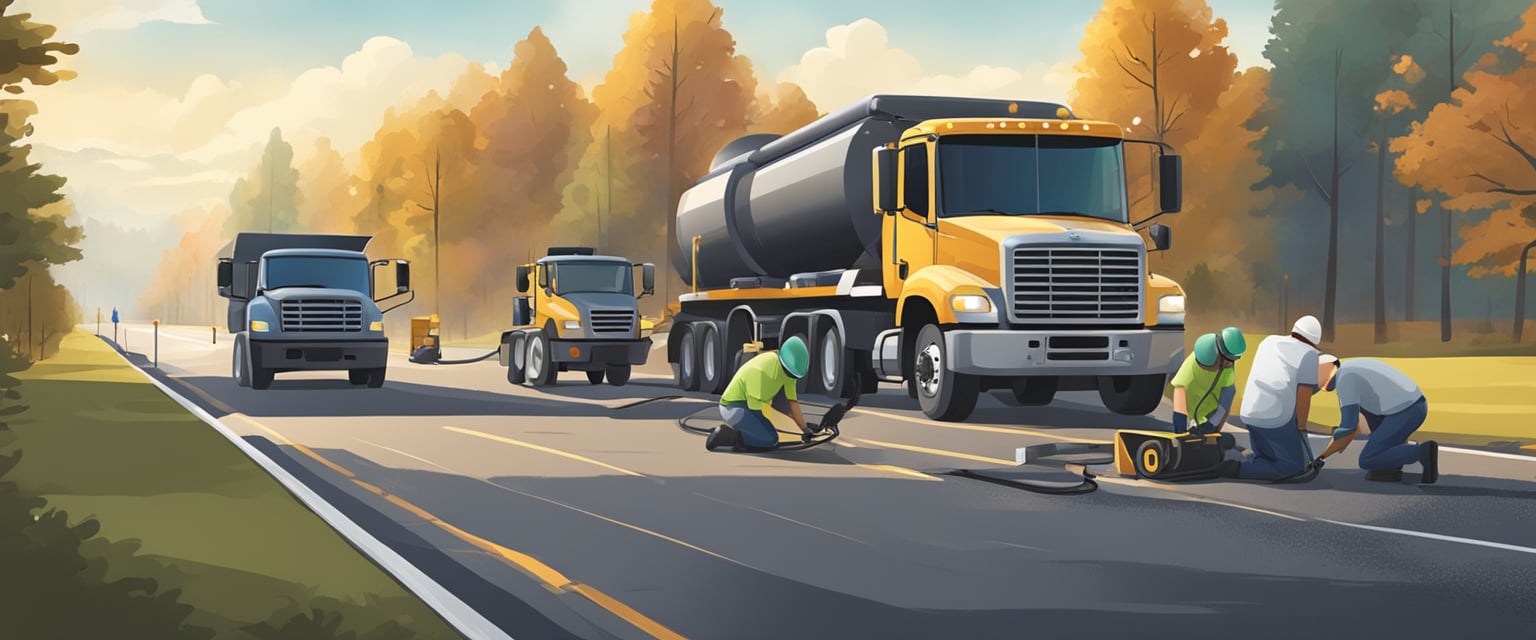
Effective asphalt maintenance extends beyond regular cleaning and filling of cracks. It must address specific challenges such as uncontrolled vegetation, high-traffic wear, and unexpected damages requiring urgent attention. These considerations are vital for maintaining the integrity of flexible pavement.
Addressing Weeds and Vegetation Control
Weeds and other vegetation can cause significant damage to asphalt if not managed properly. They may introduce moisture and organic acids that weaken the asphalt’s binder and lead to cracks. A combination of preventative measures and timely interventions is essential to maintain pavement surfaces. Regular application of herbicides and filling of cracks are both crucial in keeping vegetation at bay.
Managing High-Traffic Zones
Areas enduring consistent heavy traffic are more prone to wear and can quickly deteriorate if not maintained adequately. Regularly monitoring these zones for signs of distress and applying asphalt reinforcements can mitigate the effects of heavy use. It’s recommended to use high-quality materials for patching and consider the use of durable sealants to protect these zones from premature degradation.
Conducting Emergency Repairs
Unexpected incidents can lead to sudden damage, necessitating immediate action to prevent further deterioration of the pavement. Operators should be prepared to perform emergency repairs such as patching potholes or fixing large cracks promptly. Having a rapid response plan in place will minimize the impact on traffic and preserve the pavement’s condition for the long term.
Frequently Asked Questions
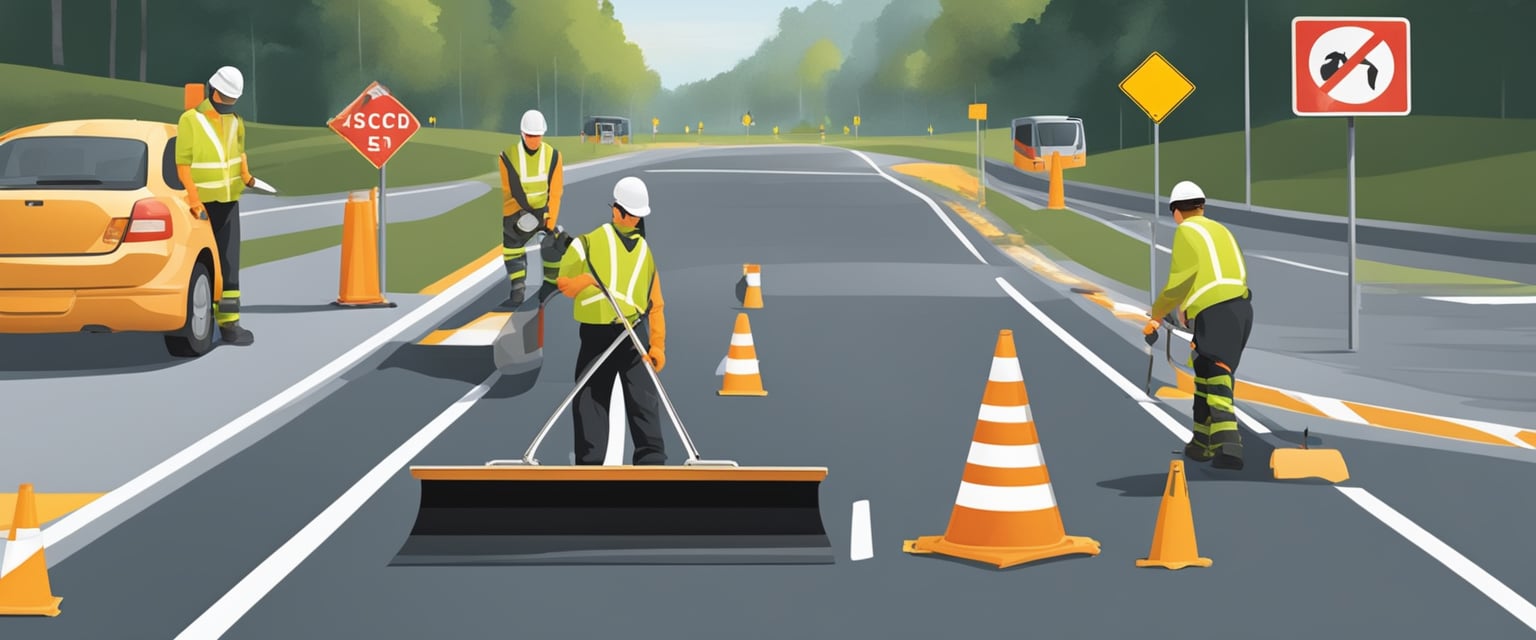
Asphalt preventative maintenance is key to lengthening the lifespan and maintaining the condition of pavement surfaces. This section addresses common queries regarding best practices and strategies.
What are the essential steps involved in a routine asphalt maintenance schedule?
Routine maintenance for asphalt typically includes regular cleaning, sealcoating, filling cracks, fixing potholes, and occasionally overlaying with new asphalt. These steps help protect against elemental damage and wear.
How can one evaluate the cost-effectiveness of different asphalt preventative maintenance strategies?
The cost-effectiveness of asphalt maintenance strategies involves comparing long-term costs of pavement deterioration against the immediate expenses of various maintenance activities. Factors include material and labor costs, the longevity of the fix, and prevention of larger issues.
What items should be included in a comprehensive asphalt preventative maintenance checklist?
A comprehensive checklist for asphalt maintenance often includes inspection of the surface for damages, crack sealing, pothole repairs, sealcoating, and line striping, among other regular upkeep practices to ensure the pavement remains in top condition.
Which asphalt maintenance approach is considered the most effective in extending pavement life?
Sealcoating is acknowledged as one of the most effective maintenance methods for protecting and extending the life of asphalt pavement by providing a protective layer that wards off the adverse effects of water, traffic, and UV damage.
How often should preventative maintenance be performed on asphalt pavements?
The frequency of preventative maintenance for asphalt pavements depends on traffic volume, climate conditions, and the current state of the pavement, but generally, it is recommended every 2-3 years to keep the pavement in optimal condition.
What distinguishes corrective maintenance from regular asphalt maintenance?
Corrective maintenance is performed to fix existing problems such as potholes or large cracks, whereas regular asphalt maintenance like slurry seal applications aims to prevent these issues from occurring in the first place by maintaining the integrity of the asphalt surface.



